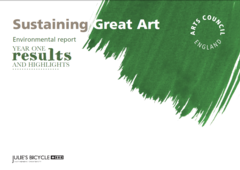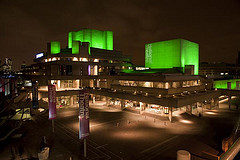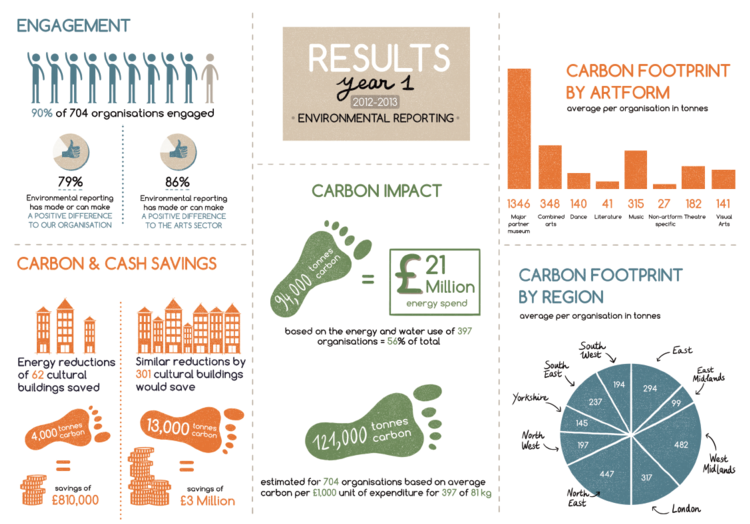:entertaining sustainability
practical sustainability for the entertainment industry
:most popular
:elsewhere
:events
-
Smart Lighting Controls Europe 2014
February 27, 2014 from 9am to 5:30pm – Cavendish Conference Centre
0 Comments 0 Likes
:advertisement
:cafe/bar
Does being 'sustainable' cost too much time and money?
Started by entsust in :the cafe Dec 14, 2013. 0 Replies 0 Likes
While the thinking is that being more 'sustainable' as a business should lower your costs, does it just cost too much to begin with - in both time and money?By the time that you've invested in all…Continue
Tags: social, environmental, economic
:unique visitors
Arts Council England & Julie's Bicycle release first year environmental reporting results
In 2012, the sustainability-in-the-arts debate in England received a huge shove to the front of the agenda when the nation’s largest state funding body, Arts Council England (ACE), announced a world first - that sustainability considerations were to be intrinsically embedded into the funding process.
After a tendering exercise, cultural sustainability organisation Julie’s Bicycle (JB) succeeded in becoming ACE’s sustainability partner, and last week ACE & JB released what they called their 'Sustaining Great Art -Year One Results & Highlights' document. Given that this is the first year of the mandatory reporting scheme, there is nothing too revelatory, but the headline figures do give an insight into the economics of the funded arts in the country not seen in this light previously.
 In all, 704 National Portfolio Organisations, Major Partner Museums and Bridge Organisations are required to report on energy and water, and to have an environmental policy and action plan. The report showed a very high engagement with the partnership programme – around 90% - although perhaps that is to be expected when precious funding contracts are at stake. That said, data of sufficient quality for true analysis was only available from 56%, or 397, of the 704 organisations. Totals were therefore extrapolated by JB to provide a snapshot of the environmental performance of the country’s ACE-funded cultural offer.
In all, 704 National Portfolio Organisations, Major Partner Museums and Bridge Organisations are required to report on energy and water, and to have an environmental policy and action plan. The report showed a very high engagement with the partnership programme – around 90% - although perhaps that is to be expected when precious funding contracts are at stake. That said, data of sufficient quality for true analysis was only available from 56%, or 397, of the 704 organisations. Totals were therefore extrapolated by JB to provide a snapshot of the environmental performance of the country’s ACE-funded cultural offer.
There were some interesting statistics generated as a result. The actual annual energy spend of the 397 reporting venues was some £21m – made up of £17m electricity, and £4m gas. This would average out at around £53,000 per venue, but the report makes clear that when it comes to the total carbon footprint, four organisations on their own contributed 25% of the total emissions, while 28 accounted for half of all emissions. That means 7% of the venues accounted for 50% of the carbon footprint of the group – quite a statistic.
The numbers when it came to water use were equally staggering - 782 million litres of it was used (excluding bottled water, we're told!) across the participants - equivalent to over two hundred Olympic swimming pools full.
 When some of your buildings are as large as, say, the Brighton Pavilion, the National Theatre (right) or the Museum of London, then your resource consumption is going to be high. These are large, complex spaces - culturally significant, yet hard to rationalise from an energy perspective - although organisations like the National Theatre have been undertaking significant improvement works for some time.
When some of your buildings are as large as, say, the Brighton Pavilion, the National Theatre (right) or the Museum of London, then your resource consumption is going to be high. These are large, complex spaces - culturally significant, yet hard to rationalise from an energy perspective - although organisations like the National Theatre have been undertaking significant improvement works for some time.
While the statistics themselves are just that, and establish a baseline of sorts, it's what it means for the programme in the future that's perhaps most important, given those first year findings. There are breakdowns within the report of what the next project steps will be - more monitoring, naturally - and some differentiated strategies for dealing with different types of organisation. Collaboration across the sector will be required, the report notes, although there is little mention of communicating achievements and best practice to the very beneficiaries and funders of both the product and project - society itself.
It's a little unclear what's in store for the funding of the organisations involved. It's claimed in the report that initial scepticism has "evaporated", but that some organisations are still "concerned" about what all this monitoring means for their finances. This is hardly surprising - with less and less public money available for arts subsidy, funding bodies need to be sure that their money is being used in an economically sustainable manner - but the manner of that judgment for environmental impact - if it exists or is to exist - has yet to be defined. There is certainly not yet any indication of as tough a regime as that imposed in the Higher Education sector, for example, with direct penalties for lack of progress.
All in all, though, the process can surely only be a good thing. Results from the 62 of the best performing organisations seem to show that if early successes could be replicated across 301 companies, 13,000 tonnes of carbon saving could be made - a cash figure of £3 million. That should only mean more money going on the art itself, and less on wastage that should and could be eliminated.
The project runs until the financial year 2015/2016, and further reports can be expected during that period. Since they open up to even more scrutiny the venues in which we consume art and culture, it will be both interesting and informative to see how this pressure translates to results.
¦ www.artscouncil.org.uk
¦ www.juliesbicycle.com
Picture credits: Main infographic - Julie's Bicycle; National Theatre - Flickr user wwfunitedkingdom
© 2014 Created by entsust.





You need to be a member of :entertaining sustainability to add comments!
Join :entertaining sustainability